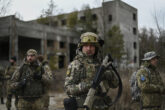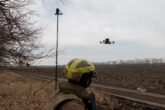February 09, 2018
Too Many Secrets
Last week’s decision by House Intelligence Committee Republicans and the White House to declassify a misleading, politically charged memo about evidence in the Russia investigation is yet another example of our toxic political environment. But it also points to another problem—one that existed long before President Trump—about how the U.S. government inconsistently and ineptly treats classified information and Americans’ poor understanding of that process.
Executive Order 13526, issued by President Obama in 2009, governs the process by which certain officials in the U.S. government can classify information—that is, make the decision to protect certain classes of information related to our national security for an established period of time. The process, typologies, and review mechanisms appear straightforward on paper. The ways officials apply them are anything but.
Classification means different things to different people, and this fact has implications for our politics as well as our security. To a bureaucrat, a classified memo is probably a normal document derived from a dozen piecemeal sources someone else has decided need to be kept confidential. At one agency, staffers will protect it to the point of absurdity; at another, they’ll massage it into public talking points. To a citizen, it’s a sexy and important document, and the classified nature implies a finished, reliable product. To a journalist or policy expert following the issue closely, it’s not entirely clear why it needed to be protected.
Read the full article in Slate.
More from CNAS
-
Defense / Transatlantic Security
When Defense Becomes Destruction: Austria-Hungary’s Mistake and Ukraine’s RiskThis article was originally posted on War on the Rocks. The southeastern Polish city of Przemyśl, with its elegant 19th century Habsburg-era train station, remains one of the ...
By Franz-Stefan Gady
-
Defense / Transatlantic Security
Ukraine’s Catch-22 MomentThis article was originally published in the Financial Times. In Joseph Heller’s wartime classic, Catch-22, the protagonist Yossarian seeks out the US army surgeon Doc Daneeka...
By Franz-Stefan Gady
-
CNAS Insights | Budgetary Own Goals Undermine “Speed and Volume”
On November 7, Secretary of Defense Pete Hegseth laid out a plan to overhaul the Department of Defense’s (DOD’s) acquisition system. Placing an emphasis on delivering new capa...
By Philip Sheers, Carlton Haelig & Stacie Pettyjohn
-
Drones: Who Is Making the New Weapons of War?
From Ukraine and Russia to Gaza and Sudan, drones have become a key weapon of war. Which companies are making them, and profiting from this rapidly expanding but controversial...
By Stacie Pettyjohn




